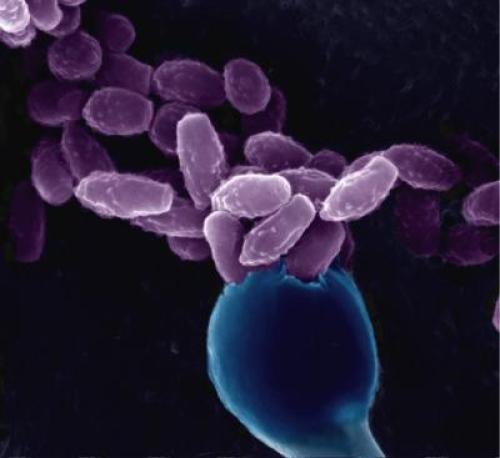We're open daily! View holiday hours
Science News
Whiskey, Wolves, and Fungus Sex!
September 13, 2013
by Molly Michelson

Here’s a sampling of a few science headlines from this past week—enjoy!
Grey wolves
When are grey wolves not grey wolves? According to headlines this week in Nature News and New Scientist, the grey wolves are called eastern wolves when the US Fish and Wildlife Service (FWS) wants to de-list the animals from the Endangered Species list.
Citing a publication in FWS’s own North American Fauna journal, the agency claims that the grey wolves were never historically in the regions where the species are being restored. Those were a separate, healthy species, eastern wolves.
But scientists, not to mention genetic testing, describe the eastern wolves as a sub-species of grey wolves. Read more about the science and politics in Nature News.
Crazy, dangerous fungi reproduction
Cryptococcus neoformans is a dangerous fungus that infects individuals with compromised immune systems, such as HIV/AIDS patients. It causes more than 600,000 deaths a year, accounting for a third of all AIDS-related deaths. Some strains can be drug resistant and scientists had a hard time determining why.
Like some other fungi and microorganisms, C. neoformans are both asexual and procreate with exact replicas of themselves, where the expected outcome should simply be more of the same. So how could some individuals develop drug resistance when others do not?
Now researchers, publishing in PLoS Biology, have found the act of sex between such genetically identical organisms can itself be mutagenic, meaning it can create genetic changes and diversity where it did not previously exist. In fact, in the case of the fungus C. neoformans, the process of sexual reproduction can result in extra bundles of genetic material or chromosomes that can be beneficial to the organism's survival—such as drug resistance.
ScienceNOW has more information.
The chemistry behind whiskey
Thank goodness for Thomas Collins (that’s really his name!) of UC Davis. He’s studying the chemical compounds that make up rye and bourbon whiskeys.
Using chemistry’s latest analytical tools, Collins’s team profiled 60 American whiskeys and found that a single whiskey sample can contain hundreds of nonvolatile compounds, the ones that tend to stay in the liquid rather than evaporate off. Added up across multiple samples, the number of compounds comes to about 4,000 total, a scientific testament to the complex molecular mingling that occurs as a spirit ages, sometimes for decades, in a 53-gallon oak barrel.
Why the in-depth study? “Whiskeys’ chemical profiles could be used for distillers’ quality assurance or process improvement programs,” says Collins, who has conducted similar experiments on wine. “In addition to that, they could be used to help speed up production.”
I’ll drink to that! NPR has more details on the influence of oak barrels on whiskey flavor.
Image (fungus): Joseph Heitman